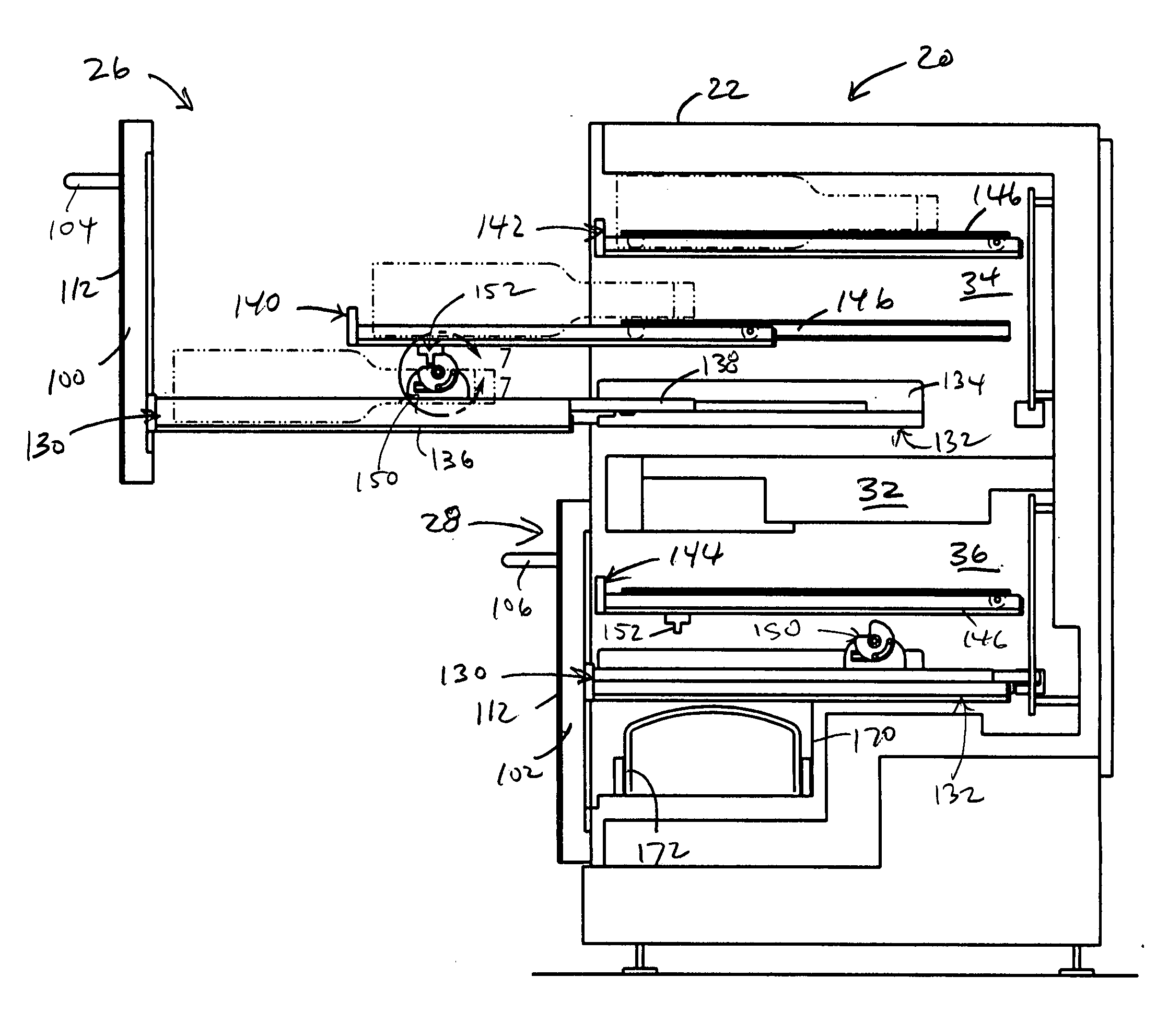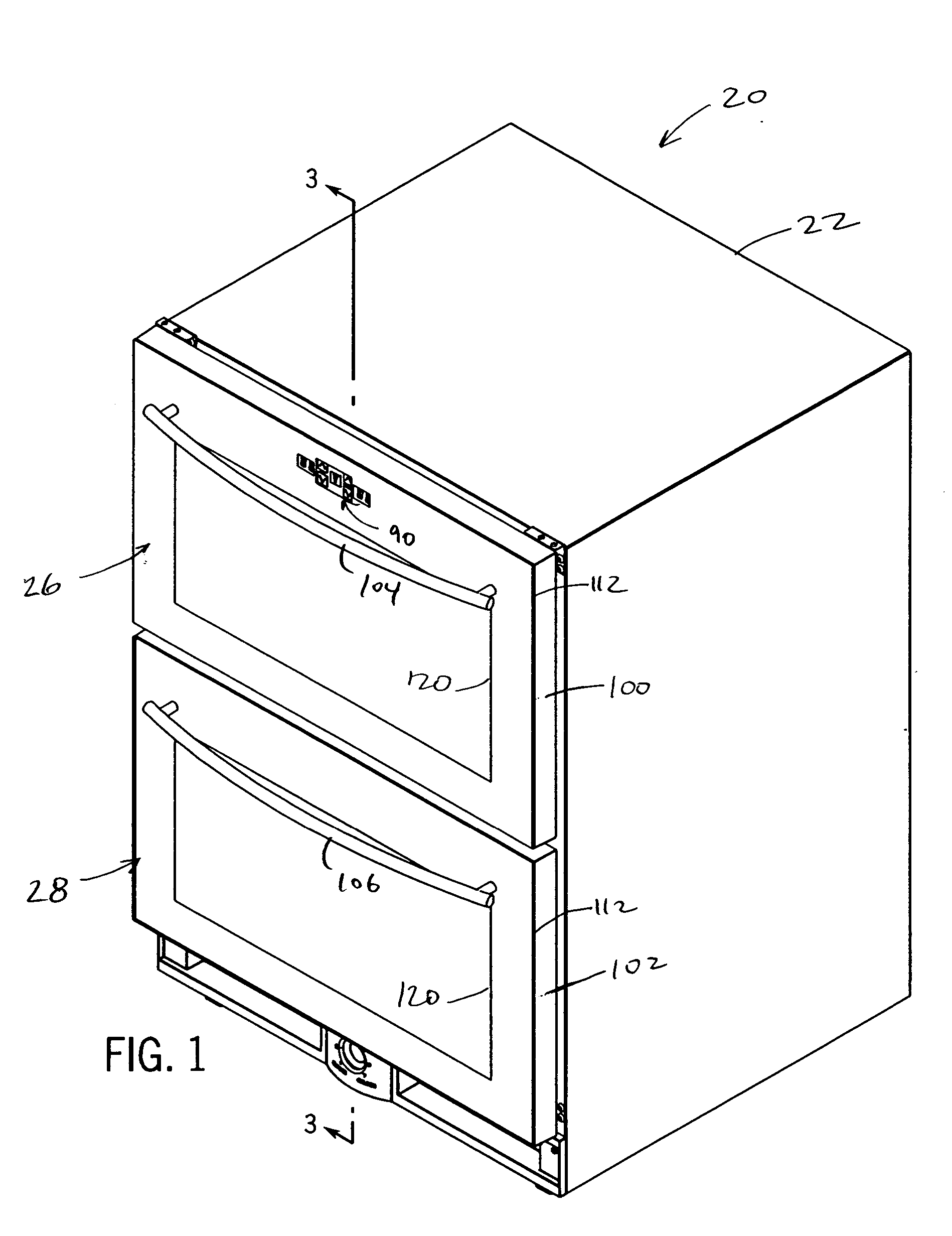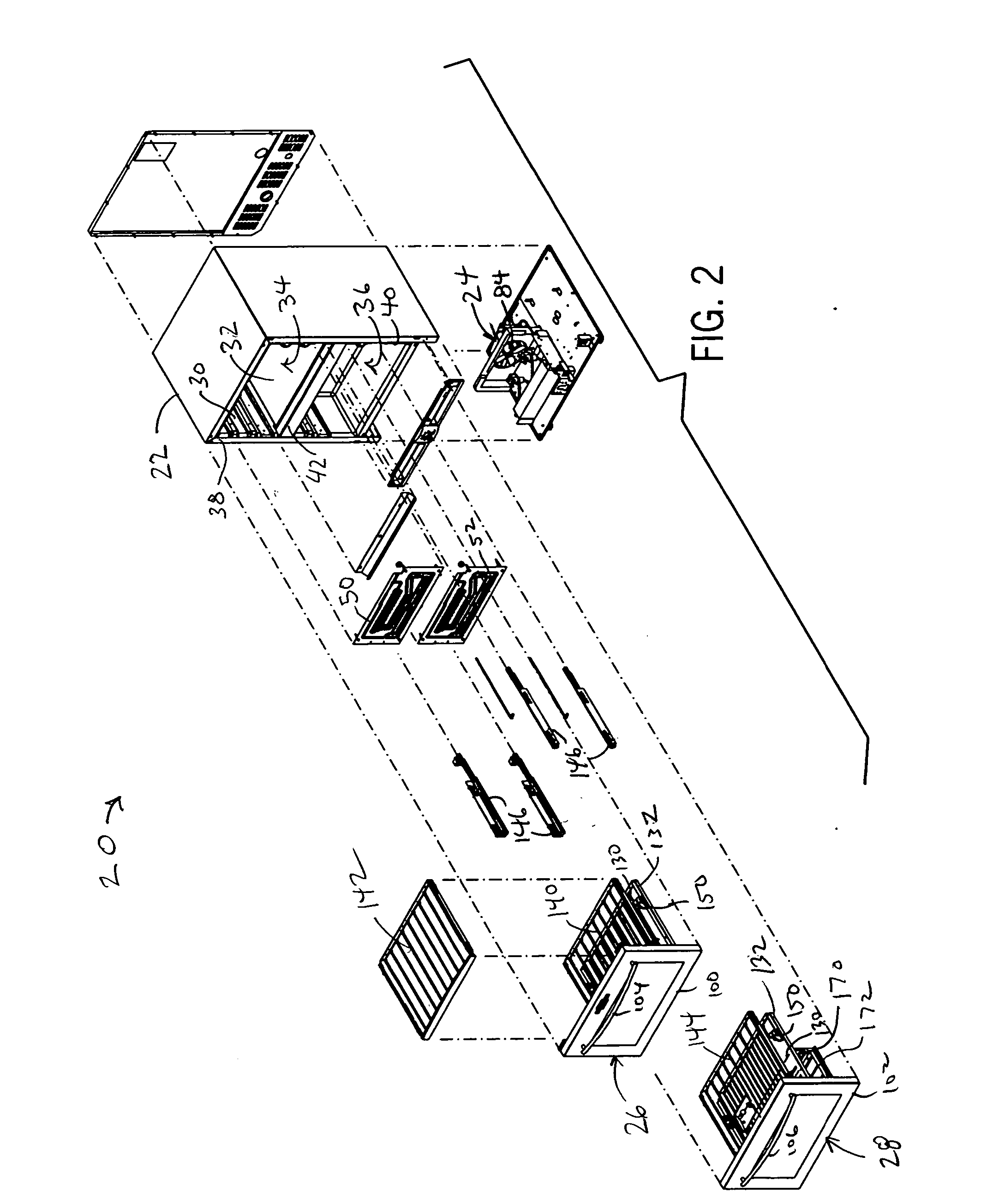Pull-out access cooler unit
a cooler unit and pull-out technology, applied in the field of compact refrigeration units, can solve the problems of difficulty in removing or detecting items, difficulty in facilitating access to stored items, and difficulty in detecting items at times for consumers, so as to facilitate access and increase the user-friendliness of the uni
- Summary
- Abstract
- Description
- Claims
- Application Information
AI Technical Summary
Benefits of technology
Problems solved by technology
Method used
Image
Examples
Embodiment Construction
)
[0037] With reference to the figures, the present invention provides a cool storage unit 20 such as for food and beverages. The unit 20 includes an insulated cabinet 22 that is cooled by a refrigeration system 24 (see FIG. 11). The cabinet 22 houses one or more pull-out assemblies, such as pull-out assemblies 26 and 28, for supporting the stored items and allowing the items to be pulled out from the cabinet and accessed readily. In the preferred form discussed in detail herein, the unit 20 is a wine cooler unit for storing bottles of wine in a suitable, constant temperature environment. The cabinet holds the two pull-out assemblies 26 and 28 in a vertically stacked arrangement. While this is preferred, it should be noted that the cabinet 22 could hold only one pull-out assembly or more than two pull-out assemblies in a stacked or horizontal side-by-side arrangement. It should also be noted that the pull-out assemblies can include both racks and bin-like drawers.
[0038] Referring to...
PUM
 Login to View More
Login to View More Abstract
Description
Claims
Application Information
 Login to View More
Login to View More - R&D
- Intellectual Property
- Life Sciences
- Materials
- Tech Scout
- Unparalleled Data Quality
- Higher Quality Content
- 60% Fewer Hallucinations
Browse by: Latest US Patents, China's latest patents, Technical Efficacy Thesaurus, Application Domain, Technology Topic, Popular Technical Reports.
© 2025 PatSnap. All rights reserved.Legal|Privacy policy|Modern Slavery Act Transparency Statement|Sitemap|About US| Contact US: help@patsnap.com



